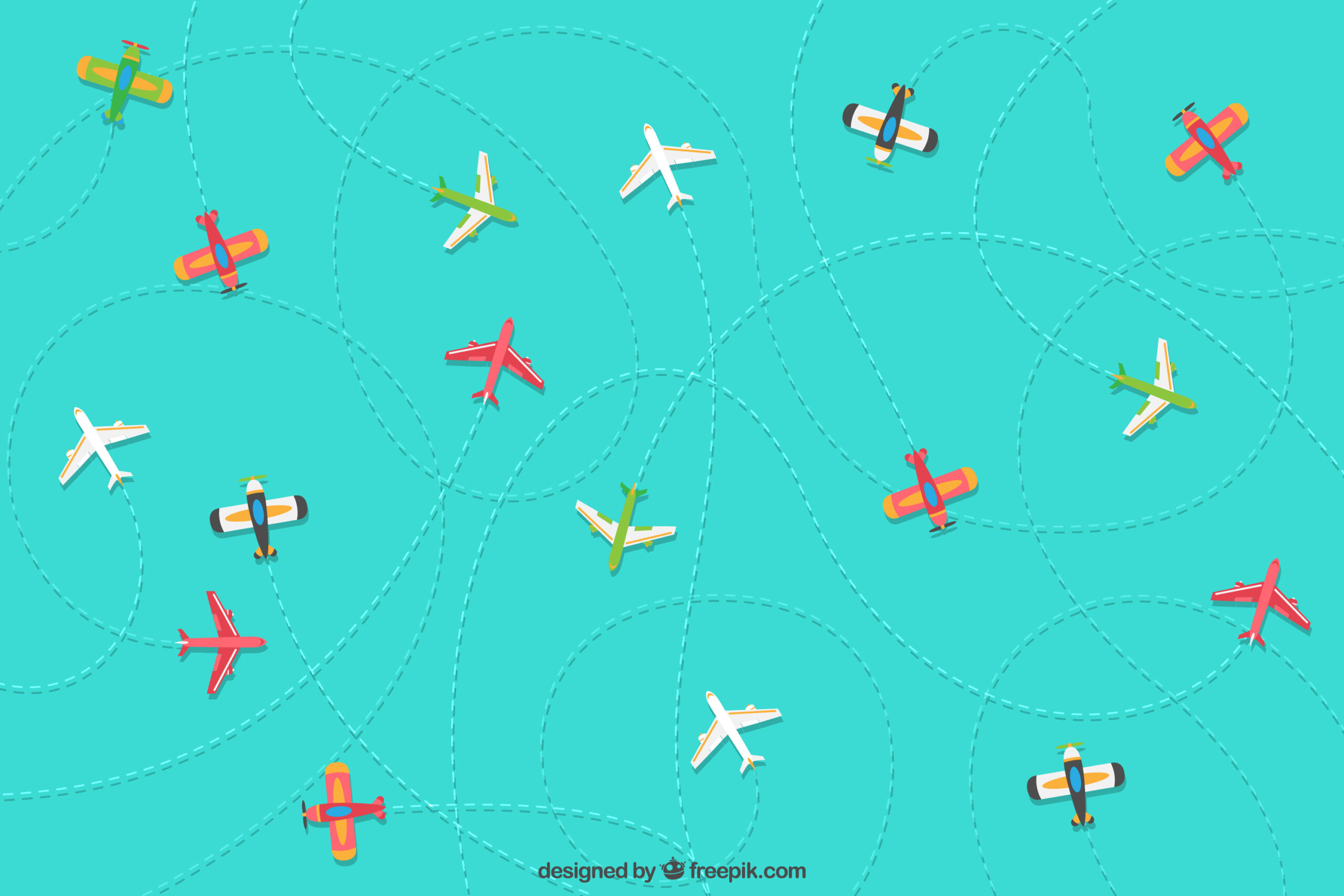It’s a question many people ask when they look up and see a contrail crossing the sky. Are there really that many planes in the air? The short answer is yes—and even more than you think. Global air traffic is one of the most complex networks on the planet. Every day, thousands of aircraft take off and land across five continents, connecting people, economies, and cultures.
According to Flightradar24, there are between 100,000 and 130,000 flights per day worldwide. This includes commercial flights, cargo, private aviation, military, and training operations.
At EAS Barcelona, a premier flight school based in one of Europe’s busiest skies, we see this up close. With over 30 years of experience and more than 2,000 trained pilots from over 50 countries, we understand that these numbers reflect more than statistics—they reveal a growing demand for highly skilled pilots.
Global Air Traffic: Current Figures and Record Days
On July 6, 2023, a global record was set: over 134,000 flights in a single day. This means that at peak times, there are more than 20,000 planes in the air at once.
In the 1980s, there were about 20,000 flights a day. Today, that number has increased fivefold. Factors such as global tourism, budget airlines, and international commerce have fueled this rise.
We’ve experienced this firsthand at EAS Barcelona. With over 250,000 hours of flight instruction, we’ve trained pilots to manage traffic in increasingly complex airspaces, especially across the Mediterranean.
How Many People Are Flying Right Now?
Every day, 10 to 12 million people are airborne. At peak hours, more than 1 million passengers are in the sky at the same time. That’s like an entire major city floating above the earth.
To support this, aviation needs advanced technology and human expertise. At EAS Barcelona, we train our students to fly responsibly. Every flight carries lives, responsibility, and precision. That mindset is embedded into our teaching philosophy.
How Air Traffic is Monitored and Managed
With so many aircraft in the sky, how is it possible to prevent chaos? The answer lies in a global network of air traffic controllers, radars, satellites, and strict procedures. It’s a system designed for precision.
Today, pilots rely on GPS navigation, satellite communications, and automated systems to ensure safe operations. At EAS Barcelona, we incorporate all these technologies into our curriculum, preparing students for today’s aviation and tomorrow’s challenges.
Training Pilots in a Busy Sky
More planes in the air means higher demands on pilots. It’s no longer enough to master take-offs and landings. Pilots must understand weather systems, flight management, regulations, and human factors.
That’s why at EAS Barcelona we combine cutting-edge simulators with strong theoretical training. We’ve logged more than 50,000 simulator hours, making us a top reference in aviation training in Europe.
How Air Traffic Has Evolved Over the Last Decade
The past ten years have seen explosive growth in global flight numbers. How many planes fly per day now? Many more than a decade ago. Although the pandemic in 2020 caused a sharp drop, recovery came fast. By 2024, traffic levels already surpassed pre-COVID figures.
There are now over 25,000 active commercial aircraft, not counting military, cargo, or private aviation. This is why demand for qualified pilots continues to soar.
At EAS Barcelona, we stay ahead of the curve. We regularly review our training model, adapting it to real-world needs. Our ISO 9001 certification supports our commitment to quality.
EAS Barcelona’s Mission: Training Pilots for an Increasingly Crowded Sky
Pilot training today is more than a career path. It’s a global need. As air traffic increases, the world requires professionals ready for complex, international environments.
EAS Barcelona has become the choice of aspiring pilots from over 50 countries. With 30+ years of experience, our alumni now fly for top airlines like Ryanair, Emirates, Vueling, and Iberia.
To us, training a pilot means developing skills, discipline, and leadership—not just flying techniques. These qualities are essential in today’s dynamic aviation world.
What the Numbers Say: The Future of Sustainable Aviation
How many planes fly per day? Thousands. And that number will keep growing. The future of aviation will be more efficient, digital, and environmentally conscious. Electric aircraft and biofuels are already here. However, the human factor will remain essential.
At EAS Barcelona, we’re preparing for that future. We train pilots who can embrace technology, uphold safety, and adapt to the industry’s fast-changing landscape.
